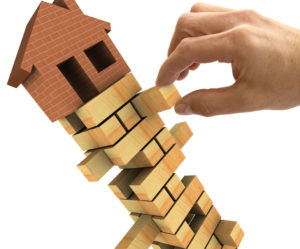“Fool me once, shame on you; fool me twice shame on me.”
Let’s see if it is “. . . shame on me.”
Glass-Steagall
In my high school history class during my junior year in 1961, I remember hearing about the Glass-Steagall Act of 1933, . . . barely. I remember my history teacher saying it was a good thing. I vaguely remember saying to myself, “Ok, anything that stopped the Great Depression is fine by me.”
In the mid 1980’s, I started hearing about the Glass–Steagall Act again. This time, however, bankers were telling me it had to be repealed. By this time I knew a little more about the act: like, it provided a wall between different types of banks in order to cut down on speculation. Honestly, I felt uneasy about what bankers were telling me, but what did I know? “I’m not a banker. If you can’t trust your banker, who can you trust?”
It’s now the late 1990’s, “deregulation” was the cry from Republican congressmen, bankers, and high net worth individuals. “Let the markets regulate themselves.” By this time, I was one of the cheerleaders. And in 1999, Glass- Steagall was repealed, letting commercial banks and investment banks work together. Collecting deposits and making loans by commercial banks was now commingled with creating securities by investment banks.
What a fool I was to think that was going to work.
Repeal Was A Disaster
It was an unmitigated disaster. The financial world collapsed in 2008 and with it much of the western world’s economy. And a big part of this happened because Glass-Steagall was repealed. The guys who had the power to make loans became the same people who used those loans to create risky sub-prime mortgage backed securities. It was the co-mingling of banking functions that did this.
In short, bankers made mortgage loans to people who didn’t qualify and ultimately couldn’t make monthly payments. These bankers then packaged the loans and sold them as securities (bonds) to investors. At a point, mortgage payments stopped coming in. Bottom line? There was no money. The financial system froze up.
Millions of home owners who had been issued sub-prime mortgages couldn’t afford to make their monthly mortgage payments, because adjustable rates exploded on them. Consequently, banks didn’t have money coming in. As a result, investors stopped receiving interest payments on those bonds.
How much money are we talking about here? By the end of 2007, there was $1.3 trillion of sub-prime mortgages hanging out there.
Why? Why? Why?
Why would banks engage in such risky and unsavory activities?
Money. Money, money, money. Moneeee. . . into their personal pockets.
It was a good run for them while it lasted. For example, according to new research just released by The Economist, over the past 25 years (ending in 2005), the fastest growing segment of the upper 1% of wage earners came from the financial sector, of which bankers make up a substantial portion.
Bankers created over $1 trillion of sub-prime loans that they then packaged and turned into bonds that investors bought. For this, billions of dollars of immediate fees and bonuses were generated, all of which went quickly into bankers’ personal pockets.
There are no angels in this life, and bankers proved that point. An example is Richard Fudd, CEO of bankrupt and now defunct Lehman Brothers, at one time the fourth largest investment bank on Wall Street. Fudd received the “thief” award by the Financial Times for receiving $40.5 million in 2006 and $34 million in 2007, the last two years before the bank’s failure. CNN placed Fudd on the “10 Most Wanted: Culprits of the Collapse” of 2008, the majority of which came from the sub-prime crisis.
Where’d All The Money Go?
So, where’s the rest of that $1.3 trillion dollars?
In the homeowners’ pockets? Everyone who owns a home, sub-prime or not, lives in a home that has been severely discounted. You won’t find any money there.
Brace yourself. The $1.3 trillion is gone.
When you add up everything, you will find that with the exception of the fees paid to bankers, much more than the $1.3 trillion has been lost. When you look at the multiplier effect of $1.3 trillion you will find that several trillion dollars was lost. All home values were discounted, pension funds were discounted, bond portfolios were discounted, etc. Everything went down except, of course, for the fees and bonuses collected by bankers. That went up.
The Craziness Ends
This craziness came to a head with the 2008 financial meltdown. Finally the “Fed” and Treasury intervened and rescued the financial system.
Congress acted and passed a replacement to Glass-Steagall. It’s called The Dodd-Frank Bill. Of the several things it does, it again separates commercial and investment banking. Guess who opposes the new bill? The core of the Republican Party, with major support coming from the financial sector. Have these financial guys no shame?
I’m a moderate Republican, and Republicans are my brethren in political philosophy. But do you think I’m going to support any effort to criticize, alter, repeal or in any way tamper with the new Dodd-Frank Bill? Not in this life, or any lifetime to come.
The game’s up for those in the banking game.
If they want to get rich, they won’t do it by controlling the banking system from start to finish. That is, they won’t make loans, then package those loans as securities and then buy the securities with their depositors’ money.
. . . last thought
I was fooled the first time out, but not the second time.
